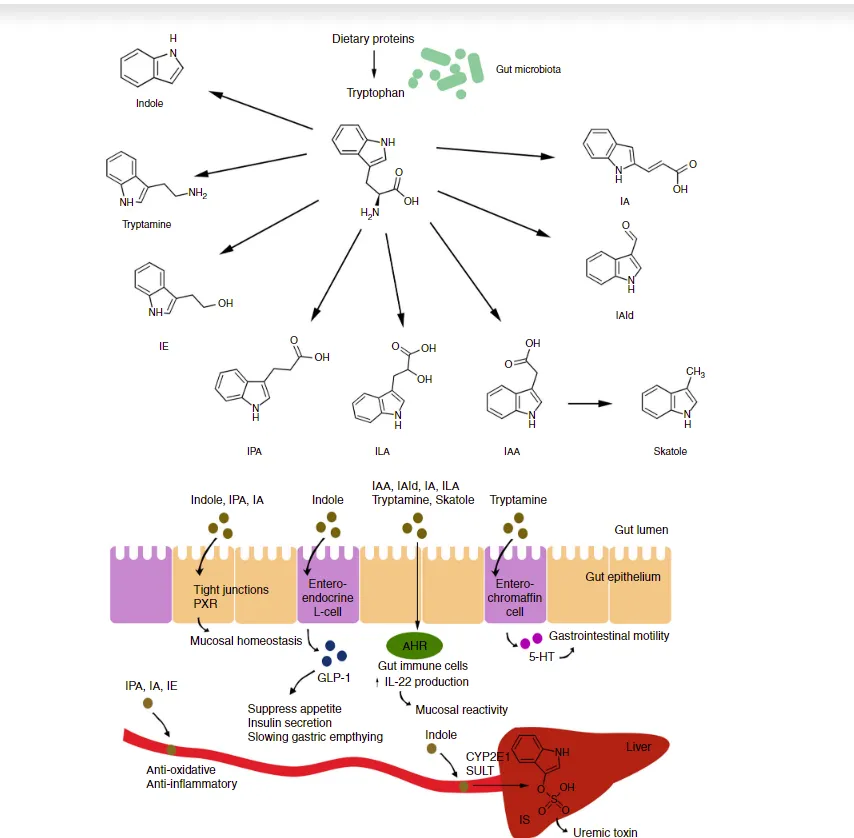Detoxification Explained
- Adam Rinde, ND
- Feb 27, 2018
- 4 min read

Detoxification is any process of decreasing the negative impact of xenobiotics (toxins) on bodily processes. This process involves biotransformation of endogenous and exogenous molecules into excretable metabolites. Xenobiotics are chemicals or molecules that are foreign to the biologic system, originating externally (e.g. toxic substances in the environment) or internally (e.g. food and metabolic byproducts).The main sources of Xenobiotics (toxins) in the body are: natural body waste, ingested toxins, food additives, air pollutants, herbicides, household products, drugs, cookware, food pollutants, water pollutants, and heavy metals from solvent exposure.
The detoxification process usually involves diet and nutrient therapy, hydrotherapy, sauna, and exercise with the purpose of aiding the body in eliminating and cleansing the body of toxins. Advanced detoxification techniques with chelation therapy are often used to reduce the body of heavy metal burden.
Special tests can be done to test for environmental toxin burden. These include the Urinary Organic Acid Panel, Caffeine Clearance Test, and the 24-hour urinary provocation test for heavy metals.
Detoxification has been ritually practiced in ayurvedic medicine for many thousand years. And, is the basis of European Spa Medicine that has been around for hundreds of years. The theory behind detoxification is that the body accumulates toxins from diet and environmental causes.
Why should I care about detoxification?
The burden of toxins in the body may cause DNA damage, or inflammatory states. There is some evidence that toxic burden on the body may be linked to decreased cell-mediated immunity, hypersensitivity (allergy), increased autoimmunity, neurotoxicity, and endocrintoxity.
Risk factors for toxicity include unhealthy dietary and lifestyle habits, exposure to xenobiotics, genetics, age and gender, diseases, and medication use.
Warning signs of toxicity include: a history of increasing sensitivity to xenobiotics, abundant use of medication, significant use of toxic chemicals, sensitivity to odors, myalgias, memory loss, numbness, neurologic changes, hormonal changes, paresthesias (nerve pain), and sensitivity or reactions to medication or supplements.
How does detoxification work?
Most detoxification takes place in the liver and the intestinal wall.
In the most basic sense, detoxification process takes toxins and converts them so they can be eliminated in water. This is necessary to rid the body of toxins through the skin, bowels, urine, and breath. Otherwise the toxins are stored in fatty areas of the body including fat cells, liver, and brain cells.
There are two phases of detoxification.
Phase I involves the following steps: Oxidation, reduction, hydrolysis, hydration, and dehalogenation. This process involves cleavage through hydrolysis and removal of chloride, fluoride, bromide, or iodide groups. These reactions create reactive intermediates and free radicals that without protective nutrients can cause damage to tissues. In order to get out of the body another step of detoxification is required.
The second phase (Phase II) involves conjugation processes that convert toxins to water soluble forms for excretion and elimination from the body. Phase II processes are sulfation, glucuronidation, glutathione conjugation, acetylation, amino acid conjugation, and methylation.
Approach to detoxification therapy
There are many approaches to detoxifying the body. These include water fasts, juice fasts, and strategies like the Master Cleanser.
A comprehensive approach to detoxification might involve the following
Avoidance of known sources of toxicity to reduce toxic load including: chemical dependencies, alcohol processed foods, fried foods, plastics, pesticide rich foods, smoking, homes with lead paints, unnecessary prescription drugs, solvents ,paints ,exhaust fumes perfumes ,hair sprays ,new furniture ,carpeting ,cabinetry ,plastics , and gas or oil heat.
Depurative/Sweat Treatments to relieve body of toxins through the skin.
Exercise to stimulate bile flow which is a main source of toxin elimination.
Dietary program that includes a hypoallergenic and liver supportive diet. This would incorporate a whole foods diet with the avoidance of the most common allergens sugar, dairy, wheat, soy, and eggs. Also important in the diet are cruciferous veggies, olive oil, onions ,garlic, root vegetables; all which support the liver and aid in detoxification. Also important is adequate protein intake to support detoxification processes.
Nutrient and herbal therapy
Alkalinizing minerals (CA, Mg, K, and Zn) to prevent an acidic environment and side effects.
Antioxidants (A, C, E, grape seed extract, green tea extract etc. ) to reduce free radicals and reactive intermediates.
Milk Thistle for liver protective qualities.
Phase I and Phase II detoxification supportive nutrients
B-Vitamins for supporting key pathways for phase I.
Flavonoids.
Branch Chain Amino acids
Phospholipids
Glycine, Taurine, Glutamine, N-Acetylcysteine, Cysteine, Methionine all which help with conjugation and elimination of toxins through the kidney and bowels.
Counseling and emotional Support
When considering detoxification it is highly advised to detox under the guidance of a trained health professional. This approach to detoxification is not used for acute exposure to toxic substances but rather chronic low level exposure. If acutely exposed to toxic substances dial 911. These situations are best handled by a toxicology clinic.
References:
Bland, Jeffrey S. The 20-Day Rejuvenation Diet Program. Keats Publishing. Los Angeles. Pgs. 110-111.
Jones, David S. 2005. The Textbook of Functional Medicine. The Institute of Functional Medicine. Gig Harbor, WA. Pg. 195-196, 278-295,543-580.
Pizzorno, Joseph and Michael Murray. 2006. Textbook of Natural Medicine 3rd edition. Online Edition. Elsevier Ltd. Philadelphia, PA. pg.339-351



